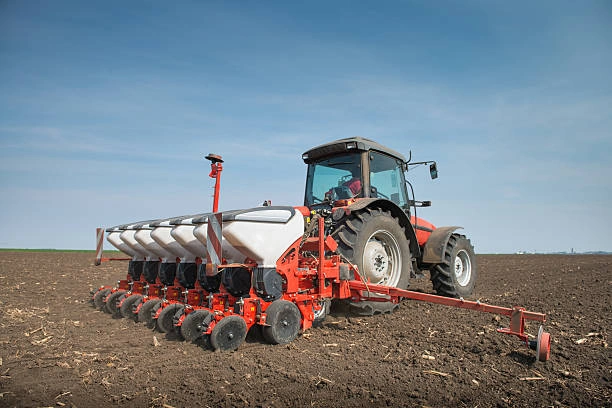In modern agriculture, no-till technology is becoming an increasingly popular cultivation method. No-till refers to a planting approach where the soil is left undisturbed before seeding, with crop residues from the previous season retained while seeds are directly sown into unplowed soil.
This method not only effectively reduces soil erosion and preserves soil structure but also lowers labor and fuel costs in agricultural production. Additionally, it helps increase soil organic matter content and promotes ecological balance.
Key Preparations for No-Till Equipment
Inspecting and Repairing the Planter
No-till places high demands on planter performance, as any defects can quickly become apparent during the seeding process. Before beginning no-till planting, thoroughly inspect each component of the planter to ensure it is in optimal condition. Pay special attention to the double-disc openers—check whether they are sharp enough to effectively cut through crop residue and create an ideal seed trench.
Additionally, inspect row cleaners and closing wheels for excessive wear and replace them if necessary. Ensure that the depth gauge wheels and downforce system are functioning properly to achieve precise seeding.
Equipping the Right Attachments
No-till planters require specialized attachments to handle complex field conditions. For example, row cleaners serve as the first line of defense in clearing debris from the seed zone, preparing optimal seeding conditions—especially crucial in fields with heavy and damp residue.
Depending on soil type and residue conditions, select an appropriate closing wheel system to ensure proper seed coverage. If the planter lacks a downforce system, consider adding one to compensate for the increased soil moisture in no-till conditions.
Considering Equipment Upgrades
In some cases, upgrading the planter may be the key to successful no-till farming. Not all planters built in past decades are suitable for no-till operations, so it is essential to determine whether the equipment is compatible with no-till systems before making a selection.
Engage with experienced no-till farmers to understand why they prefer specific planters or settings. Ensure that new equipment meets no-till requirements for precise seeding, residue management, and soil moisture adaptation.
No-Till Planter Setup and Key Considerations
Maintaining Proper Planter Leveling
Proper leveling is crucial for a no-till planter. The planter should operate evenly to ensure that every seed is placed at a consistent depth and spacing. Row units must function accurately, with depth gauge wheel pressure evenly distributed to prevent uneven seed depth.
Adjusting Row Cleaners
Row cleaners should be optimized according to field conditions. Their purpose is to clear residue without disturbing the soil while avoiding conflicts with depth control mechanisms. In fields with heavy residue, cleaners with angled tines are more effective at managing difficult debris. In complex terrain, floating row cleaners can automatically adjust to changes in ground elevation, reducing row unit bounce.
Aligning Openers and Closing Wheels
Sharp openers are essential for no-till success. Regular inspection and replacement are necessary to ensure they can smoothly cut through residue and create an ideal seed trench. Closing wheels should be properly aligned with openers to guarantee adequate seed coverage. In no-till systems, angling the closing wheels slightly can help break sidewall compaction and allow soil to distribute evenly over the seed.
Conclusion
No-till technology offers numerous advantages for modern agriculture, but it also places higher demands on planter preparation and setup. By thoroughly inspecting and repairing the planter, equipping the right attachments, and optimizing machine settings, farmers can significantly improve their chances of no-till success.
No-till not only helps preserve soil health and enhance productivity but also provides substantial economic benefits. By preparing thoroughly and continuously refining equipment and operations, farmers can unlock new opportunities for sustainable development on their farms.

